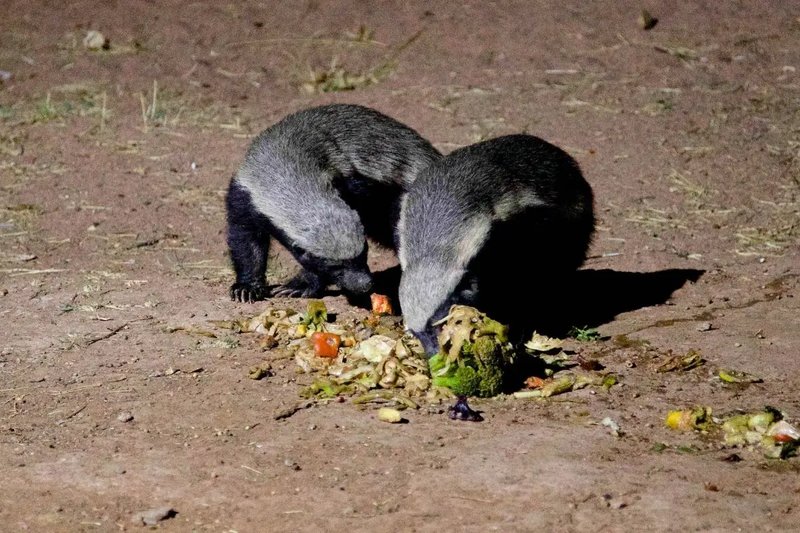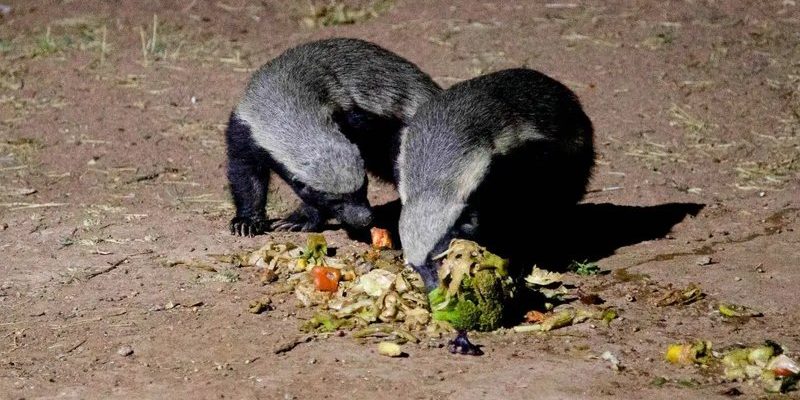
Honey badgers belong to the weasel family, and they’ve earned themselves a spot in the wild world of animal lore. Their diet is diverse, and their methods of hunting are as cunning as they are bold. You might picture them as the ultimate opportunists—both in the wild and in their eating habits. So, grab a cup of coffee, and let’s explore the intriguing details about the diet and hunting strategies of the honey badger.
Understanding the Honey Badger’s Diet
You might be surprised to find that honey badgers are not picky eaters. Their diet includes a mix of fruits, plants, and meat, which makes them omnivores. This flexibility allows them to thrive in various habitats, from savannas to forests. Here’s a closer look at what they enjoy munching on:
- Insects: Honey badgers are notorious for their love of insects, especially bees and larvae. They have a knack for digging into hives and braving bee stings to get to the tasty treats inside.
- Small mammals: They don’t shy away from hunting small mammals like rodents or even juvenile birds. With their sharp claws and tenacious spirit, honey badgers can catch their prey quickly.
- Reptiles: Lizards and snakes are part of their diet too. Some studies show that they sometimes even tackle venomous snakes, showcasing their fearless nature.
This adaptability in food choices helps honey badgers survive in diverse environments. Depending on the season and what’s available, this fearless little creature can switch its diet without breaking a sweat.
Honey Badgers and Their Favorite Food: Honey
If there’s one thing that stands out about honey badgers, it’s their love for honey. Yes, they’re named after it for a reason! These critters have a unique strategy for getting to the sweet stuff. You might be wondering how they do it. Let’s break it down.
When a honey badger spots a beehive, it doesn’t hesitate. They often use their strong claws to break open the hive, which would scare off most animals. But not for our honey badger! They’ve developed a thick layer of skin, allowing them to withstand stings while they feast on honey and larvae. It’s like having protective gear on while playing a rough sport.
This honey-seeking adventure doesn’t just fill their bellies; it also helps other animals in the ecosystem. By destroying the hives, they allow other creatures to find food sources. It’s a win-win situation!
The Hunting Techniques of Honey Badgers
Honey badgers are skilled hunters, but their approach is often a blend of intelligence and sheer guts. They don’t just chase after their prey blindly. Instead, they assess the situation and come up with a plan. Here’s how they do it:
- Stealth and Patience: When hunting, honey badgers can be quite stealthy. They’ll often sneak up on their prey, using their low profile to stay hidden. Once they’re close enough, they pounce at the right moment.
- Powerful Digging Skills: These animals aren’t just tough; they’re also excellent diggers. Honey badgers can dig up burrowing animals effectively, tapping into their strong claws to unearth their next meal.
- Intimidation: Here’s the thing—honey badgers are known for their fearlessness. If confronted, they may put on a fierce display, hissing and growling to scare off potential threats or rivals. This bravery often helps them secure their meals.
Their combination of stealth, strength, and bravado makes them successful hunters in a competitive environment. It’s not uncommon for them to take down prey larger than themselves!
Cooperation and Social Dynamics
Interestingly, honey badgers are usually solitary animals. They prefer to hunt and live alone, but that doesn’t mean they’re not social creatures. Sometimes, they cooperate with other species for mutual benefit.
For example, when honey badgers encounter birds like the honeyguide, they recognize an opportunity. Honeyguides lead honey badgers to beehives, benefiting from the leftovers after the badger has done its digging. It’s a great example of teamwork in the animal kingdom, where both parties get something they want.
You might see this kind of cooperation in other species too, but it highlights the cleverness of honey badgers. They are adaptable, learning from their surroundings and the creatures they share their habitats with.
Challenges Faced by Honey Badgers
Despite their fierce reputation, honey badgers face various challenges in the wild. Habitat loss and hunting by humans are significant threats. As their habitats shrink, finding food becomes more difficult.
Hunters often see honey badgers as pests, leading to conflicts. These badgers often scavenge livestock or raid beehives, causing farmers to see them as a nuisance. It’s a tricky balance; while their hunting instincts help them survive, it also puts them at odds with humans.
Conservation efforts are essential to protect these animals and their habitats. Understanding their unique place in the ecosystem can help people appreciate their value and the role they play in nature.
The diet and hunting strategies of honey badgers are as fascinating as they are complex. These remarkable creatures prove that size doesn’t always dictate strength or skill. They adapt, hunt, and thrive in challenging environments. Their extraordinary ability to tackle everything from insects to larger mammals, coupled with their love for honey, makes them a captivating subject of study.
As we learn about honey badgers, it’s our responsibility to protect their habitats and ensure they have the space to thrive. The next time you hear about these fearless hunters, remember the complex world they navigate to survive. They may be small, but their impact on the ecosystem is undeniably mighty.

